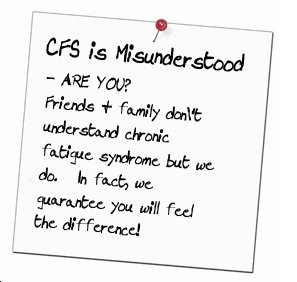Diabetes: Getting Cholesterol Down
People with diabetes should try to keep their cholesterol as low as possible. That's because low cholesterol can help prevent diabetes complications. People with diabetes have a higher risk of heart attack and stroke. If you have high levels of cholesterol and triglycerides, your risk increases even more.
Diabetes and heart disease go hand-in-hand. Cardiovascular disease is the leading cause of diabetes-related death. In fact, people with diabetes are two to four times more likely to develop cardiovascular disease than those without. At least 65 percent of people with diabetes die from heart disease or stroke.
The American Diabetes Association suggests people with diabetes keep low-density lipoprotein (LDL) cholesterol, the bad cholesterol below 100 milligrams per deciliter (mg/dL), high density lipoprotein (HDL) cholesterol, the good cholesterol above 40 mg/dL for men and higher than 50 mg/dL for women, and triglycerides below 150 mg/dL. Results from the latest studies have led to the recommendation that LDL cholesterol should be less than 70 mg/dL in people with diabetes.
Your best bet to help reduce your risk is to keep your cholesterol levels as low as possible, and to control your blood pressure and blood sugar. Start by getting a blood test once a year to check your cholesterol levels. Your doctor can tell you if you need checks more often than that.
What is cholesterol?
Everyone has cholesterol. Your body needs it to produce cell membranes and some hormones. Cholesterol is a soft wax-like substance in your blood and in your cells. When you have too much of the wrong kind of cholesterol, you increase your risk for developing heart attacks and stroke.
Cholesterol can't dissolve in the blood and is carried from cell to cell by lipoproteins. You have three types of these lipoproteins - VLDL (very low density lipoprotein), LDL and HDL. Too much VLDL or LDL can cause your arteries to clog.
HDL is the kind of cholesterol that you want to have because it protects you by carrying cholesterol away from your arteries. It may help reduce your risk of heart attack.
Triglycerides are carried on VLDL and their level is also important. Triglycerides are the chemical form in which most fat exists in food and in the body. They come from fats found in foods and are also made in the body. Calories not used right away are changed to triglycerides and stored in fat cells. Between meals, your hormones regulate the release of triglycerides to give you energy.
People with diabetes tend to have low levels of HDL cholesterol and high levels of triglycerides. They also have LDL particles that stick to arteries more easily and increase the chance for plaques to develop.
What you can do
Keeping your diet healthy and getting at least 30 minutes of exercise most days of the week can help lower cholesterol. Medications can also help. Lipid-lowering medications include:
Statins, which lower LDL cholesterol by inhibiting an enzyme that controls the rate of cholesterol production.
Bile acid sequestrants, which bind with bile acids in the intestines and eliminates them in the stool.
Nicotinic acid, or niacin (a B vitamin), which improves blood levels of all lipoproteins when given in high doses.
Fibrates, which are mostly effective in lowering triglycerides and, to a lesser extent, in increasing HDL cholesterol levels.
Ezetimibe, which prevents absorption of cholesterol from the intestine.
Also lower your risk by:
Keeping tight control of your blood sugar.
Reducing stress.
Not smoking.
Controlling and monitoring your blood pressure.
Eating a healthy diet rich in fruits and vegetables and low in fat and sodium.
Getting plenty of exercise. Check with your doctor first.
Getting regular checkups from your health care providers.
Losing weight. Losing even a few pounds can help reduce your health risks.
With enough time, elevated blood sugar levels can damage eyes, kidneys, nerves and blood vessels. This damage to blood vessels helps cause thickening of vessel walls, allows fatty materials to build up in the blood and enables plaque growth in the arteries.
This can lead to coronary artery disease (restricted blood flow caused by narrowed or partially blocked coronary arteries), cerebrovascular disease and strokes (due to narrowing of the arteries supplying blood to the brain), and peripheral arterial disease (restricted blood flow because of narrowed or partially blocked peripheral arteries supplying blood to the legs and arms).
People with type 2 diabetes, which accounts for most cases of diabetes, often have other risk factors such as high blood pressure, uncontrolled cholesterol, smoking, obesity and a lack of physical activity. Improvements in blood glucose, lipids and blood pressure can decrease the risk for complications.
the A to Z directory of dealing with Health Problems & Self Care Strategies for natural remedies to your health issues.

Subscribe to get your weekly "Health Success Magazine" with a new complete & comprehensive Health Report in every edition!

to “Your Health Success”
our weekly F’R’E’E’ Newsletter
If you would like a free no-obligation private consultation or to contact Warren Tattersall for more information, please click here >> Contact Us

Click the books above to learn more about how we treat CFS naturally, to get your life back!
You will find many assorted Health Reports available for download free to you on this website!
Our free Health Success Reports are each available for you to download when you subscribe to receive them and their 7 part eCourse.
You can unsubscribe at any time, but we are sure you will want to receive all the email lessons of these informative ecourses.
Read more HERE to select the REPORT subjects of most interest (or concern) to you.







